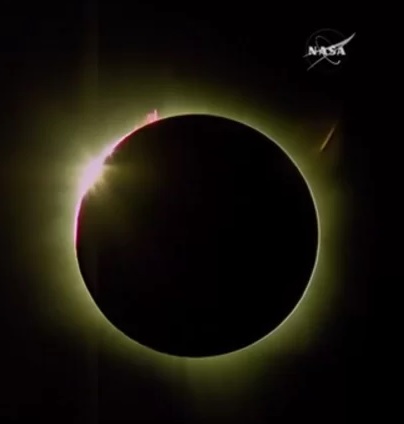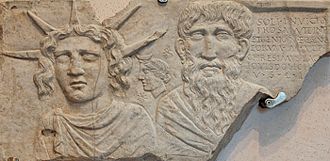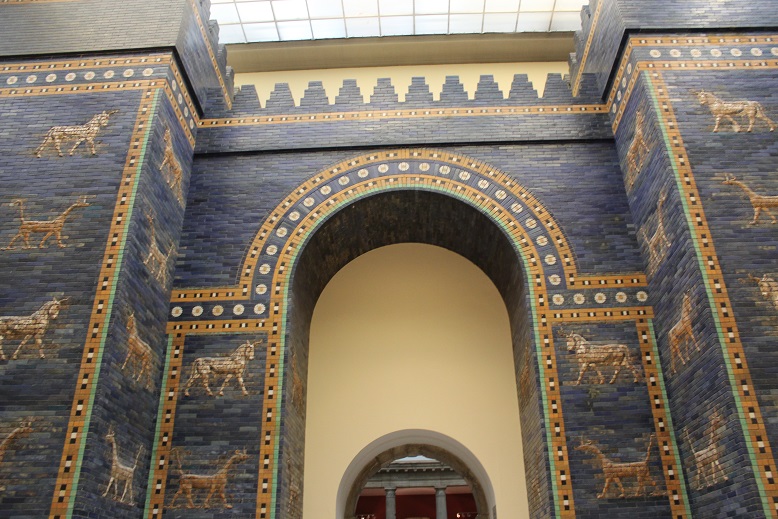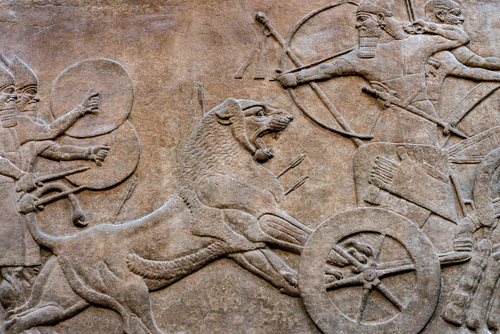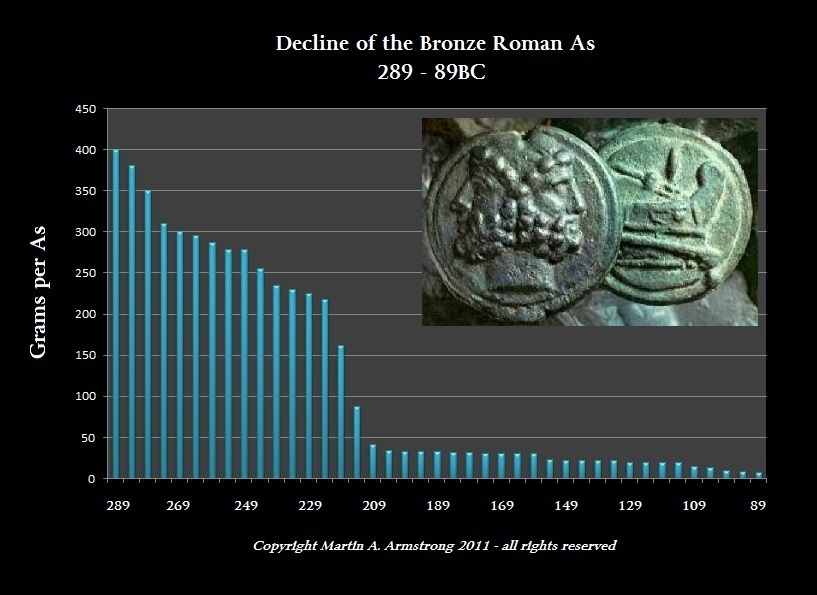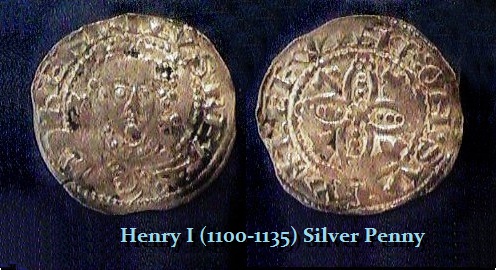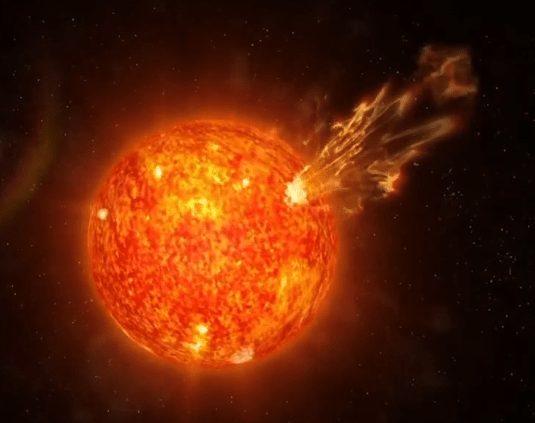![]() Solar eclipses have been observed throughout history. As to be expected, they have often been seen as omens along with comets. We hear if the star of Bethlehem that announced the birth of Jesus and the comet that appeared the night Julius Caesar was assassinated, which has been historically recorded on coins proving his divinity.
Solar eclipses have been observed throughout history. As to be expected, they have often been seen as omens along with comets. We hear if the star of Bethlehem that announced the birth of Jesus and the comet that appeared the night Julius Caesar was assassinated, which has been historically recorded on coins proving his divinity.
Yet eclipses have also been seen as major markers of events throughout time. There is of course the famous eclipse that marked the Crucifixion of Jesus. The Christian gospels say that the sky was darkened for hours after the crucifixion of Jesus, which historians viewed either as a miracle or a portent of dark times to come. Later historians used astronomy to pinpoint the death of Christ based on this eclipse mentioned. Some historians tie the crucifixion to a total solar eclipse lasting 1 minute and 59 seconds that occurred in the year 29 AD while others say a second total eclipse, blocking the sun for 4 minutes and 6 seconds, in 33 AD, marked Jesus’ death. In the Vatican Codex, the oldest copy of the Greek Bible speaks of the solar eclipse in the Book of Luke. This is supported by a Greek historian named Phlegon, who also recorded a solar eclipse at the same period. Phlegon wrote a history entitled The Olympiads, in which he records during the rule of Tiberius Caesar a three hour eclipse of the sun. The ellipse of the sun took place at the time of Tiberius Caesar, in whose reign Jesus was crucified, and the great earthquakes which then took place.
Yet what is very interesting, is the fact that the eclipse of 33AD was also timed with the Great Financial Panic in Rome. The Financial Panic of 33AD provides one of the few detailed accounts of events recorded by the ancient historian Tacitus (56–117AD) where the primary focus appears to be moneylending (banking crisis).
Where a comet marked the birth of Jesus, it was an eclipse that marked the birth of Mohammed. The Koran mentions an eclipse that preceded the birth of Mohammed. Historians later tied this to a total eclipse that lasted 3 minutes and 17 seconds in 569 AD. The sun also disappeared for 1 minute and 40 seconds after the death of Mohammed’s son Ibrahim. But the world’s first Muslims didn’t believe that eclipse was a sign from God. Instead, according to Islamic texts called the Hadiths, Mohammed proclaimed “the sun and the moon do not suffer eclipse for any one’s death or life.” Muslims pray five times daily, but during eclipses they specially perform the “eclipse prayer” whose purpose is to remember the might and gifts of Allah the Creator.
Eclipses of the Sun are indeed awe-inspiring phenomena that have spawned legends and correlations throughout time. Such events have truly inspired a variety of claims. In many early cultures they were seen as omens of the coming end of the world. The word eclipse is of Greek origin meaning stemming from abandonment, desertion, or relinquishment.
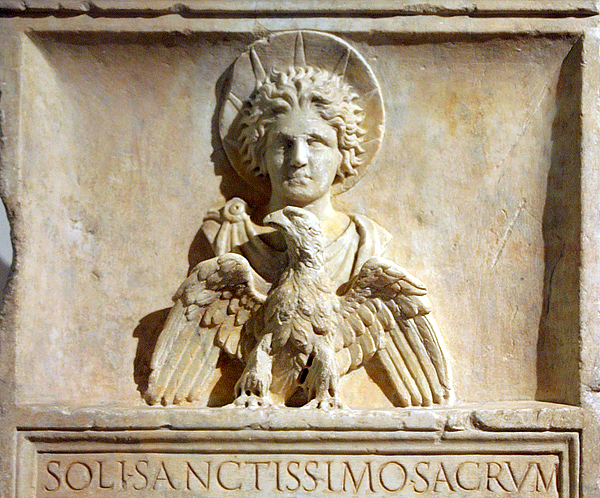 In China, India, and Southeast Asia as well as in Peru there were beliefs that dragons or demons attack the Sun during such eclipses trying to devour it. The ancient Egyptian myth of the snake Apep that attacks the boat of the Sun god is believed now to refer to solar eclipses. The cult of the Sun god Sol remains with us today in so many ways. The cult was Sol Invictus or the invincible sun that reappeared every day. Sol was depicted with rays of sunlight coming from his head. That is the model of the Statue of Liberty. This also appeared as a halo around his head, and this tradition is why Christians often used this same symbol around the heads of Jesus and saints.
In China, India, and Southeast Asia as well as in Peru there were beliefs that dragons or demons attack the Sun during such eclipses trying to devour it. The ancient Egyptian myth of the snake Apep that attacks the boat of the Sun god is believed now to refer to solar eclipses. The cult of the Sun god Sol remains with us today in so many ways. The cult was Sol Invictus or the invincible sun that reappeared every day. Sol was depicted with rays of sunlight coming from his head. That is the model of the Statue of Liberty. This also appeared as a halo around his head, and this tradition is why Christians often used this same symbol around the heads of Jesus and saints.
The Chinese and the Incas tried to frighten these dragons and demons away who were trying to devour the sun and end the world through various incantations which were believed to work since the eclipse would end and everyone most likely cheered and gave money to the priests. The Indians immersing themselves in water as a religious ritual to help the Sun struggle against the dragon. The bathing rituals are often linked to this idea.
Even today, in some countries, it is still traditional to bang pots, chant or shoot into the air when an eclipse happens to frighten off bad omens and preserve the world for another day. Some superstitions have even attributed disease comes from the solar eclipses ushering is famine and pestilence.
It was the Babylonians who in fact were the first state funded research project recording everything that ever moved from the planets to the migration of animals. Indeed, it was this massive state funded project that not merely led to astrology trying to link events on earth and traits in people to the cyclical movement of the heavens, but it led to Babylonian Priests becoming very powerful. They linked events as omens that indicated an impending miracle, the wrath of God, or the doom of a ruling dynasty. They understood the eclipse and could pronounce they were so powerful, they could darken the sun tomorrow. Who could possible do that without awesome power which the people them gave piles of gold. In 129 BC, the Greek astronomer Hipparchus had published his star charts and he relied upon the Babylonian records of several hundred years prior.
A Saros series is a series in which similar eclipses happen every 18 years 10/11 and a third days. Eclipses happen more often than that but the cycles are complex for there are many combinations of circumstances that can produce an eclipse. So there are at any given time, 42 Saros cycles running at once, which produces more than 2 eclipses per year. The same cycles come together to produce the same set of similar eclipses every 18 years and 10 or 11 and a third days. This period is what the Babylonian priests/ astronomers discovered 2,500 years ago and we retain that name Saros, meaning “repetition.” This too is fractal and we are currently in Saros series 125. The series contains 72 eclipses, occurring over 1280 years.
Ancient eclipse records made in China and Babylonia are believed to be over 4,000 years ago. Recent research has demonstrated that solar eclipses had been depicted in the fascinating mythology of ancient Egypt, and produced evidence that the ancient Egyptians also observed solar eclipses over 4,500 years ago.
The earliest recorded eclipse is described on an ancient clay tablet, in Ugarit in modern-day Syria. A total solar eclipse was linked to an uprising in an ancient Assyrian city. So will the total eclipse over the United States, be an omen of what is to begin in 2018 according to our models rekindling this view of a total eclipse as an omen of what is to come?
After all, this will be the FIRST total solar eclipse visible in the United States in nearly four decades that will take place on Aug. 21, 2017. This will be called the Great American Total Solar Eclipse, the 70-mile-wide shadow cast by the moon will darken skies from Oregon to South Carolina. Most solar eclipses, the moon takes just hides a tiny bit of the sun, but this will be a rare total solar eclipse.
Believe it or not, this August event will go down as the FIRST total solar eclipse whose path of totality stays completely in the United States since 1776 when the American Revolution took place. The 1776 Eclipse was a total eclipse of the Moon which occurred on Wednesday July, 31st, 1776. The Declaration of Independence was presented on July 1, 1776, and on the following day 12 of the 13 colonies voted in favor of Richard Henry Lee’s motion for independence. The delegates then spent the next two days debating and revising the language of a statement drafted by Thomas Jefferson. Then on July 4th, Congress officially adopted the Declaration of Independence. However, it was nearly a month before the actual signing of the document took place. First, New York’s delegates didn’t officially give their support until July 9th, which many have long since viewed the ”New Yorkers” as moving to a different beat, which is why red lights are optional in the city for pedestrians. Then it took two weeks for the Declaration to be “engrossed” which meant written on parchment in a clear hand. Most of the delegates then signed the Declaration of Independence actually on August 2nd, 1776 two days after the eclipse, which some said also was an omen.
This time, the 2017 eclipse comes in August when our model has been projecting an important turning point. It is very strange that this is coming at a time when our model is warning of the start of the Monetary Crisis in 2018. Is this also an omen as was the 1776 eclipse?
The fascinating question begs to wonder if this eclipse will make the TOP TEN eclipses in history? There was the Ugarit Eclipse which is one of the earliest solar eclipses recorded darkening the sky for 2 minutes and 7 seconds on May 3, 1375 BC, according to an analysis of a clay tablet, discovered in 1948. However, this was revised when a report appeared in the journal Nature back in 1989 suggesting that the eclipse actually took place on March 5, 1223 BC based upon historical dating of the tablet and the text which mentioned the visibility of the planet Mars during the eclipse. In approximately 1230 BC, there was the Battle of Nihriya which was the fall of the Hittite Empire to the Assyrian Empire. The rise of the Assyrians even intimidated the Egyptians and in 2 Chronicles 32:15, it reads:
‘Now therefore, do not let Hezekiah deceive you or mislead you like this, and do not believe him, for no god of any nation or kingdom was able to deliver his people from my hand or from the hand of my fathers. How much less will your God deliver you from my hand?'”
About 1221 BC, the Pharaoh Merneptah defeated the Libyan invasion, which was a combined force in union with the Sea People who were most likely invading Greeks.
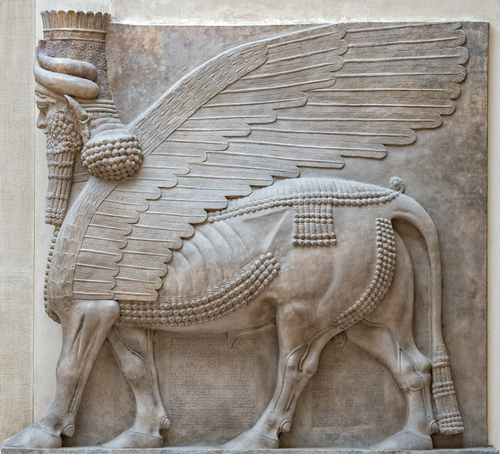 The next major event is known as the Assyrian Eclipse. In 763 B.C., the Assyrian empire, which occupied modern Iraq, saw a total eclipse of the sun for 5 minutes. Early records from the period mention the eclipse in the same passage as an insurrection in the city of Ashur, now known as Qal’at Sherqat (shown in the image) in Iraq, suggesting that the ancient people linked the two in their minds. This marked the real beginning of the Assyrian Empire’s aggression for it then conquered Egypt in 671BC following the good omen of the appearance of Haley’s comet in 674BC, The Assyrian Empire lasted for only 3 waves of 51.6 years when it fell at the Battle of Carchemish in 605 BC to the armies of Babylonia, allied with the Medes, Persians and Scythians. There were eclipses in 605 BC, and 602 BC. Three months, December 689 BC, November 678 BC, and October 602 BC, had two eclipses. The Babylonian king Nebuchadnezzar in his Chronicle, recorded that he:
The next major event is known as the Assyrian Eclipse. In 763 B.C., the Assyrian empire, which occupied modern Iraq, saw a total eclipse of the sun for 5 minutes. Early records from the period mention the eclipse in the same passage as an insurrection in the city of Ashur, now known as Qal’at Sherqat (shown in the image) in Iraq, suggesting that the ancient people linked the two in their minds. This marked the real beginning of the Assyrian Empire’s aggression for it then conquered Egypt in 671BC following the good omen of the appearance of Haley’s comet in 674BC, The Assyrian Empire lasted for only 3 waves of 51.6 years when it fell at the Battle of Carchemish in 605 BC to the armies of Babylonia, allied with the Medes, Persians and Scythians. There were eclipses in 605 BC, and 602 BC. Three months, December 689 BC, November 678 BC, and October 602 BC, had two eclipses. The Babylonian king Nebuchadnezzar in his Chronicle, recorded that he:
“…crossed the river to go against the Egyptian army which lay in Karchemiš. They fought with each other and the Egyptian army withdrew before him. He accomplished their defeat, decisively. As for the rest of the Egyptian army which had escaped from the defeat so quickly that no weapon had reached them, in the district of Hamath the Babylonian troops overtook and defeated them so that not a single man escaped to his own country. At that time Nebuchadnezzar conquered the whole area of Hamath.”
In 1302 BC, Chinese historians documented the total eclipse which blocked out the sun for 6 minutes and 25 seconds. Since the sun was a symbol of the emperor, an eclipse naturally was a serious warning to the emperor. After an eclipse, the duty of the emperor was to fast eating only vegetarian meals and performing rituals to rescue the sun. In fact, in ancient China, since the solar and lunar eclipses were regarded as heavenly signs that foretell the future of the Emperor. If an astrologer failed to predict an eclipse, they were executed. Finally, by 20 BC, Chinese astronomers realized the true nature of solar eclipses, and by 206AD, Chinese astronomers were able to predict solar eclipses by analyzing the motion of the Moon.
Ruins at Yin
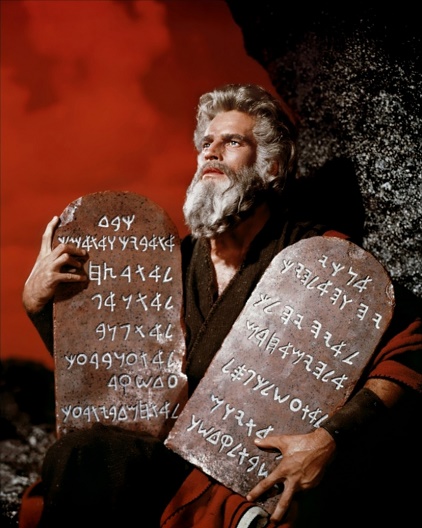 This event seems to have also marked Pangeng moved the capital of Shang Dynasty to Yin in China, perhaps because of this eclipse. However, this is also the period (c. 1300 BC—1312 BC) when the revelation of the Torah to Moses took place.
This event seems to have also marked Pangeng moved the capital of Shang Dynasty to Yin in China, perhaps because of this eclipse. However, this is also the period (c. 1300 BC—1312 BC) when the revelation of the Torah to Moses took place.
Herodotus, the Greek father of history, reported that Thales (ca. 624-547 BC), the Greek philosopher, predicted the solar eclipse of May 28th, 585 BC that put an end to the conflict between the Lydians and the Medes.
Herodotus wrote:
… day was all of sudden changed into night. This event had been foretold by Thales, the Milesian, who forewarned the Ionians of it, fixing for it the very year in which it took place. The Medes and the Lydians when they observed the change, ceased fighting, and were alike anxious to have terms of peace agreed on.
The Eclipse of 241BC marked the end of the First Punic War (264–241 BC) and the first Emperor of China, Qin Shi Huang (259-210BC), came to the thrown in his state in 246BC. He then begins to engage in the Waring States period and conquers all of China becoming the emperor in 220 BC. There was a total eclipse on June 4th, 241 BC 02:47:32 in Saros Cycle 72. The seems to have marker the fall of Carthage and the Rise of Rome as well as the start of the Qin conquest of China. We can see the cost of the Punic Wars in the debasement of the bronze coinage of Rome. The silver denarius was introduced in 211BC. It was also Eratosthenes who actually calculated the circumference of the Earth in 240BC and determined the Earth’s circumference and it was round. His data was rough, but he wasn’t far off.
Also on this list of the TOP TEN eclipses in history we have King Henry’s Eclipse in England. When King Henry I of England, the son of William the Conqueror, died in A.D. 1133, the event coincided with a total solar eclipse that lasted 4 minutes and 38 seconds. After this eclipse and the death of Henry I, a struggle for the throne plunged England into chaos and civil war. In the Anglo-Saxon Chronicle, a passage is also found recording this eclipse:
“In this year King Henry went over sea at Lammas, and the second day as he lay and slept on the ship the day darkened over all lands; and the Sun became as it were a three-night-old Moon, and the stars about it at mid-day. Men were greatly wonder-stricken and were frightened, and said that a great thing should come thereafter. So it did, for the same year the king died on the following day after St Andrew’s Mass-day, Dec 2 in Normandy.”
 Not all eclipses are bad omens. The element helium was discovered on August 18th, 1868 by the French astronomer Jules Janssen (1824-1907) when he observed the spectrum of the Sun during a total eclipse in India. Then there was also Einstein’s Eclipse of 1919. It was this solar eclipse where the sun vanished for 6 minutes and 51 seconds. This allowed the observation that gravity in fact could bend light from the stars as they passed near the sun. The findings confirmed Einstein’s theory of general relativity, which describes gravity as a warping of space-time. The British astronomer Sir Arthur Eddington (1882-1944) travelled to the island of Príncipe near Africa to observe that eclipse to verify Einstein’s conclusion that light is deflected in the gravitational fields of celestial objects.
Not all eclipses are bad omens. The element helium was discovered on August 18th, 1868 by the French astronomer Jules Janssen (1824-1907) when he observed the spectrum of the Sun during a total eclipse in India. Then there was also Einstein’s Eclipse of 1919. It was this solar eclipse where the sun vanished for 6 minutes and 51 seconds. This allowed the observation that gravity in fact could bend light from the stars as they passed near the sun. The findings confirmed Einstein’s theory of general relativity, which describes gravity as a warping of space-time. The British astronomer Sir Arthur Eddington (1882-1944) travelled to the island of Príncipe near Africa to observe that eclipse to verify Einstein’s conclusion that light is deflected in the gravitational fields of celestial objects.
 So the question becomes, does this 2017 Solar Eclipse mark the fall of the Western Culture and the beginning of the shift in the financial capital of the world to China?
So the question becomes, does this 2017 Solar Eclipse mark the fall of the Western Culture and the beginning of the shift in the financial capital of the world to China?
It is curious that such events tend to line up at times with our model. Of course, our model is derived from the data, not astrology. So we have tracked the trends (effects) but have never attempted to attribute the cause to some mystical event.
We track the effects and the ebb and flow of human events that leave their footprints throughout the centuries. Is there any connection? It is far too complex to try to attribute such things to a single event. There are numerous total eclipses throughout history. Where they occur seems to have little correlation to events in other regions.
We will see with this one since it is the first time since 1776 to appear in the United States. Have a party today and say here’s to posterity. We will.
Time will tell.

